What Are The 7 Best Baseball Gloves For 2025
Let’s be honest—there’s nothing like the feel of the perfect glove.
Whether you’re snagging grounders at second base, calling the shots behind the plate, or just trying to help your kid field a clean hop, the right glove can completely change the game.
But with dozens of models, materials, and marketing hype out there, how do you separate the real game-changers from the overpriced shelf candy?
We did the digging—so you don’t have to.
From pro-level leather to youth-friendly designs that won’t break your back (or the bank), these are the 7 best baseball gloves for 2025—tested, trusted, and ready to perform.
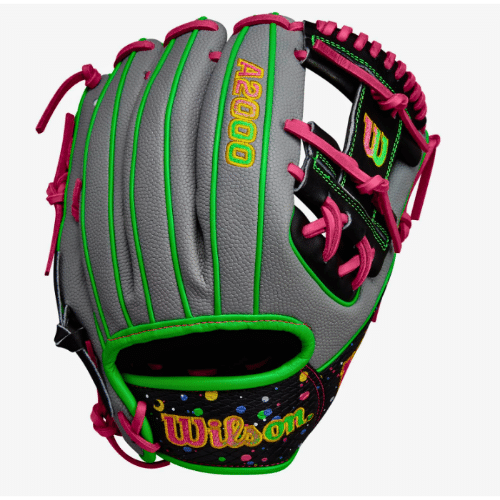
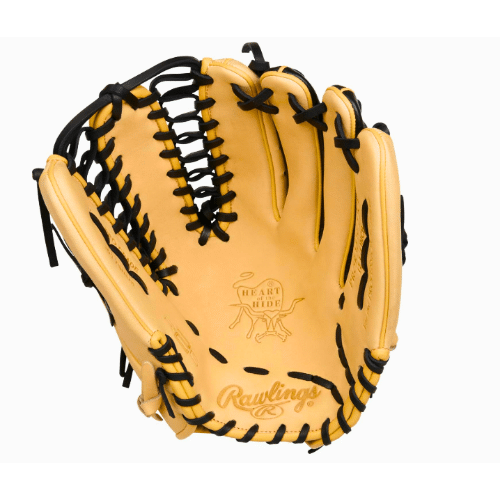
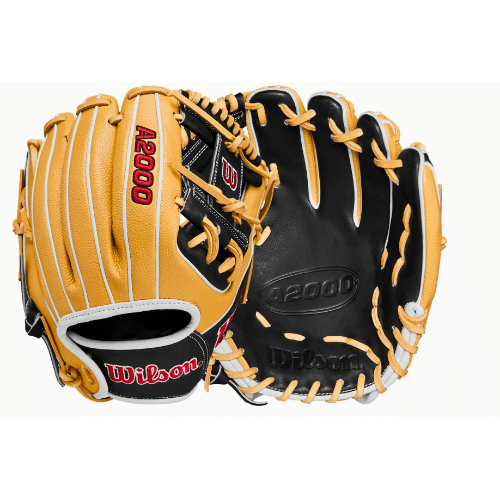
Why These Made the Cut:
- Balanced across positions and ages
- Mix of pro-tier and youth-friendly picks
- Focused on 2025 updates and real user feedback
- Avoids overlap while highlighting distinct strengths
This page contains affiliate links and I earn a commission if you make a purchase through one of the links, at no cost to you. As an Amazon Associate I earn from qualifying purchases.
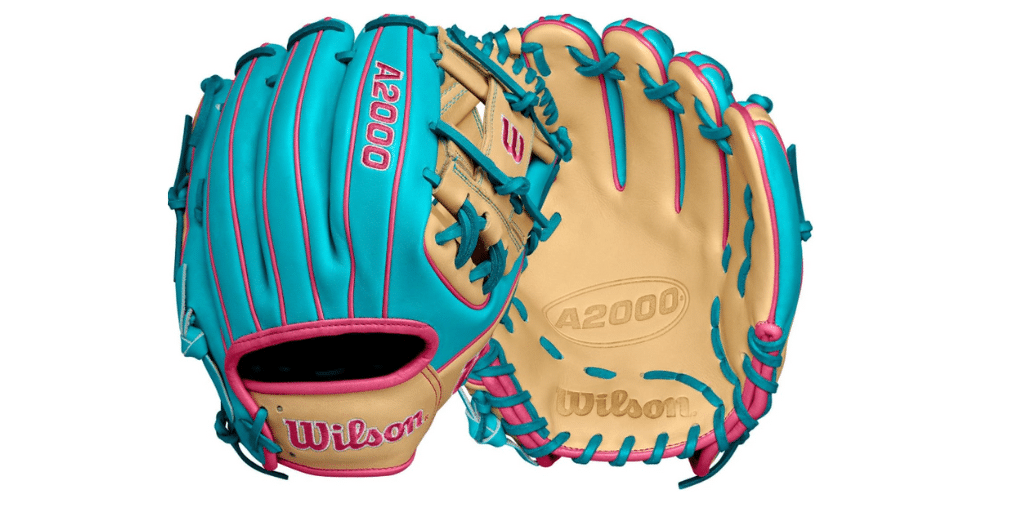
1. Wilson A2000 1786 Infield Glove
The Wilson A2000 1786 is a glove that’s earned its stripes—and then some.
It’s one of the most trusted mitts on the diamond, especially for middle infielders who live on quick turns and clean transitions.
Whether you’re flipping a double play at second or firing to first from short, this 11.5” glove gives you the control, precision, and rugged durability needed to make it look easy.
Crafted from Pro Stock Leather, it offers that signature A2000 feel—firm, long-lasting, and built for serious reps. But it’s not just about toughness.
Thanks to Wilson’s SuperSkin backing, the glove stays lighter on your hand and repels moisture better than traditional leather alone.
The 2025 update brings the glove into “forever glove” territory.
The new Comfort Pro Fit includes a buttery-soft ProLux leather liner and a redesigned comfort sleeve that eliminates wrist irritation.
Pair that with Flat Finger Binding—perfect for infielders who like to field with a finger out—and DriLex wrist lining to keep your hand cool and dry in the heat of summer, and you’ve got a serious piece of gear.
You’ll still need to break it in—Pro Stock Leather doesn’t bend easily—but once it molds to your hand, it’s game on.
Coaches rave about its longevity, parents say it fits like a glove (pun intended) for serious youth players, and players themselves often call it their “ride-or-die” mitt.
Pros and Cons
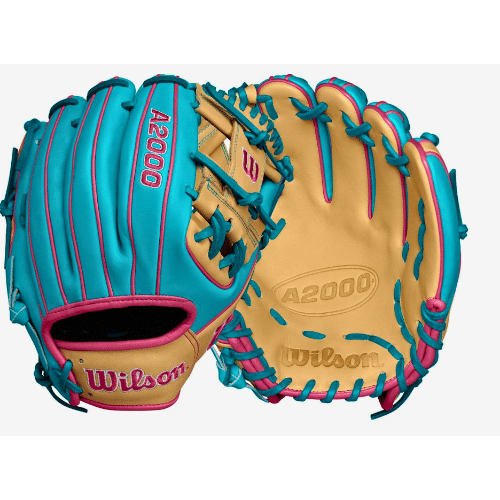
2. Rawlings | Heart of the Hide R2G Infield Glove
If you want pro-level performance without spending weeks breaking in a glove, the Rawlings Heart of the Hide R2G might be your new best friend.
This glove earns its 2025 spotlight by pairing Rawlings’ top-tier materials with a faster, more player-friendly break-in process.
Built with premium steerhide leather—the same trusted stuff Rawlings uses across its elite Heart of the Hide line.
This 11.5″ Pro I-Web model comes 65% broken in straight from the factory.
That means you can start fielding grounders right away, without spending hours pounding it with a mallet.
One of the standout features is the Contour Fit system, which was designed with smaller hands in mind.
For youth players making the jump into serious gear—or infielders who prefer a snugger fit—it’s a game-changer.
Inside, you’ll find a deer-tanned cowhide lining and soft finger back linings that boost comfort, reduce friction, and help keep your hand cool on hot days.
Parents and coaches love the glove’s balance of ready-to-play feel and classic Rawlings quality.
That said, some experienced players and online reviewers note that because it’s softened at the factory.
It may wear down a bit quicker under heavy, high-school level use compared to a traditional Heart of the Hide that takes more time to shape.
Still, for most youth and travel ball players, it’s a top-tier choice.
Pros and Cons
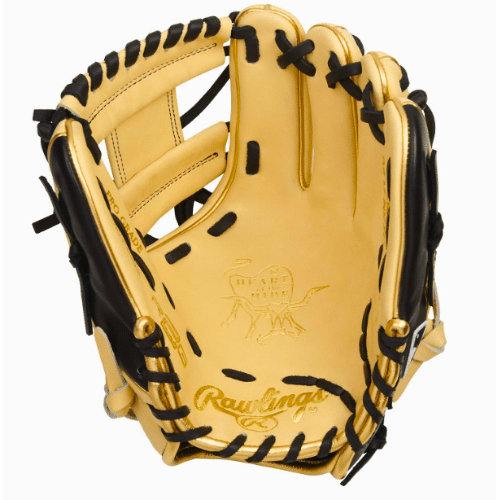
3. Wilson A2K – Infield/Third Base Glove
The Wilson A2K 2025 isn’t just a glove—it’s a handcrafted masterpiece built for elite players who treat defense like an art form.
If you’re playing high school ball, college ball, or just refuse to settle for anything less than top-tier gear, this glove is for you.
Made from Pro Stock Select leather—the top 5% of hides Wilson sources—it’s softer, stronger, and more durable than just about anything else on the field.
Each A2K goes through a meticulous 18-hour shaping process, often handled by Wilson’s expert glove craftsmen in Japan.
The result? A glove that feels like it was built just for your hand, even before it’s fully broken in.
This 11.75” infield pattern is ideal for shortstops and third basemen who need a bit more reach without sacrificing control.
Inside, the Double Palm Construction (a thin extra leather layer between the palm and liner) helps form a deeper, longer-lasting pocket that holds its shape through an entire season—or several.
Add in Rolled Dual Welting and Flat Finger Binding for extra control, especially for players who prefer their index finger outside the glove.
And don’t forget the DriLex wrist lining to keep sweat from messing with your grip when things heat up.
Let’s be real: this glove is an investment. It’s not for tee-ballers or casual rec leaguers.
It takes time to break in, and the price tag reflects its elite status.
But if you’re serious about your game, there’s a reason coaches and players swear by it.
Once it’s broken in, the A2K becomes more than just a glove—it becomes part of you
Pros and Cons
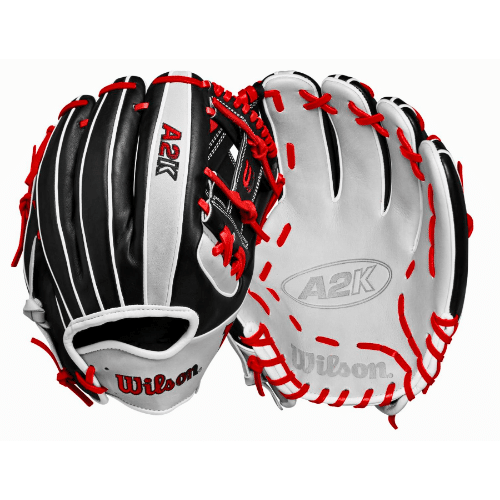
4. Rawlings Heart of the Hide R2G Outfield Glove
The Rawlings Heart of the Hide R2G Outfield Glove is what happens when legendary craftsmanship meets modern-day playability.
Designed for outfielders who want premium materials without a painful break-in period, this glove brings serious game-readiness to one of the most iconic glove lines in baseball.
Built from the same pro-grade steerhide leather used by many MLB players, the R2G series is 65% broken in at the factory, giving it a near-game-ready feel right out of the box.
No need to spend weeks pounding it with a mallet—the glove softens quickly but still maintains that classic Heart of the Hide structure and pop.
This outfield model features the Trap-Eze Web, a Rawlings classic known for creating a deeper pocket and added flexibility—perfect for tracking down fly balls in the gap or flashing leather for a highlight-reel catch.
What really makes it special, though, is the Contour Fit version, which is tailored for players with smaller hands (think youth players, women, or anyone who likes a snug fit).
Inside, you’ll find deer-tanned cowhide lining, soft finger back linings, and a padded thumb sleeve for out-of-the-box comfort.
Coaches love it because their players can start using it right away.
Parents appreciate not having to hear complaints about stiff leather.
And players?
They’re just happy it feels game-ready and looks sharp.
That said, some experienced users note that because it’s partially pre-softened, the R2G may lose shape a bit faster than traditional Heart of the Hide gloves, and it’s a touch stiffer than some other “ready-to-play” models.
Pros and Cons

5. All-Star CM3000 – Catcher’s Mitt
The All-Star CM3000 isn’t just respected—it’s revered.
Ask around in pro bullpens, and you’ll hear the same thing over and over: this is the glove behind the plate.
Built from exclusive Japanese-tanned steerhide, it offers a perfect mix of durability, responsiveness, and that crisp “pop” that pitchers and coaches love to hear.
This 33.5” mitt with a closed-web design gives catchers a deep, secure pocket to frame pitches and command the zone—whether it’s a blazing fastball or a sweeping slider.
The soft tan leather on the inside feels buttery and broken-in over time, while the black leather on the back provides the structure and stiffness needed to hold its shape through long seasons.
What makes the CM3000 stand out is the craftsmanship.
These mitts are handmade with a level of attention to detail that’s hard to match.
Out of the box, it’s undeniably stiff—especially the “blacked-out” version—but give it time, and it becomes an extension of your hand.
Veteran players and coaches swear by its long life span, with some reporting 10+ years of use when properly cared for.
But make no mistake—this is not your casual catch-and-toss mitt.
It’s designed for serious high school, college, and professional catchers who are willing to put in the work to break it in and maintain it.
Some users have mentioned minor lace stretching after extended use, but that’s rare and manageable with routine upkeep.
One thing to note: players with smaller hands may find the fit a little large—this mitt is built for big-time ball.
Pros and Cons
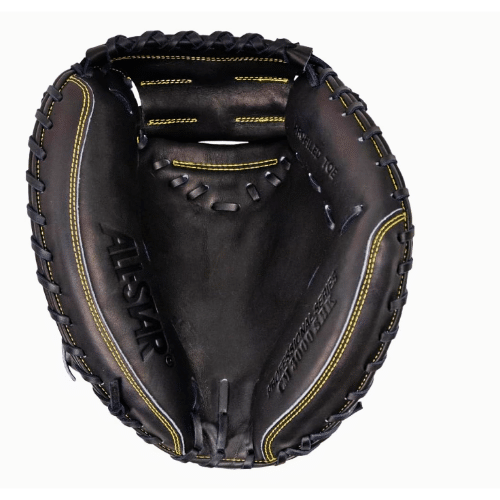
6. Wilson A2000 SuperSkin DP15 – Youth Infield Glove
The Wilson A2000 SuperSkin DP15 is a favorite for serious youth infielders who’ve outgrown beginner gloves and are ready for gear that matches their hustle.
This glove brings the signature quality of the A2000 series, but in a design made to fit smaller hands—without sacrificing performance or durability.
Built with Pro Stock Leather for that firm, game-ready structure (after break-in, of course) and backed with SuperSkin, it’s both tough and light.
SuperSkin isn’t just a cool name—it actually repels moisture and sheds ounces, making the glove easier to control during long innings and hot days.
Add in the Pedroia Fit, and you’ve got a glove that’s narrower through the wrist and finger stalls—ideal for youth players or those with smaller hands who want a glove that feels secure, not sloppy.
Comfort-wise, Wilson adds some thoughtful touches.
The Comfort Pro Fit uses soft ProLux leather lining for a smooth, buttery feel inside the glove, while DriLex wrist lining helps manage sweat and keeps the glove feeling fresh.
Players also love the Flat Finger Binding, which reduces pressure for those who field with their index finger outside the glove.
And thanks to Rolled Dual Welting, the glove holds its shape even after countless reps.
The trade-off?
This glove is stiff out of the box—really stiff.
The thinner heel pad gives more feel for grounders, but it also demands a careful break-in.
It’s not a quick fix glove, and coaches and parents alike suggest breaking it in slowly with oil, a mallet, and some patience.
But once it molds to a player’s hand, the A2000 DP15 becomes a glove they won’t want to give up—even as they move up into travel ball or high school.
Pros and Cons

7. Mizuno Prospect PowerClose – Youth General Use Glove
The Mizuno Prospect PowerClose glove is the definition of beginner-friendly.
It’s designed to do one thing really well: help young players actually catch the ball.
With PowerClose technology and a clever V-Flex Notch, this glove makes it easier for little hands to close around the ball—cutting down on missed catches and boosting confidence fast.
Instead of a stiff, uncooperative mitt that frustrates beginners, this glove feels like it wants to help.
It’s a game-changer for kids who are just learning the basics and need a tool that supports their growth instead of getting in the way.
Comfort-wise, Mizuno packed it with thoughtful features.
The ButterSoft palm liner gives the glove a cushy, broken-in feel, while the Parashock Palm Pad soaks up impact, making catching less scary and more fun.
Parents and coaches also love the MZO lining, which wicks moisture, and the PowerLock wrist strap, which helps the glove fit snugly and securely—even on the tiniest hands.
Online reviews and real-world feedback often rank this glove as one of the best starter gloves for ages 5–9, especially for kids in Rec ball.
It’s made from full-grain pigskin leather, which gives it a soft feel and solid durability for everyday use.
That said, it does run a little small—bigger or more advanced youth players might outgrow it quickly.
And while it holds up well, the laces may wear out faster if it’s pushed through daily doubleheaders or used past its prime.
Pros and Cons

Frequently Asked Questions
What’s the difference between SuperSkin and regular leather?
Wilson’s SuperSkin is a lightweight, moisture-resistant material that’s more durable and easier to maintain than standard leather—great for youth or players needing a lighter glove.
How long should a glove last?
With proper care, high-quality gloves like the A2000 or Heart of the Hide can last multiple seasons. Lower-cost youth gloves may need replacing after a year or two of consistent play.
What glove is best for catchers?
The All-Star CM3000 is the gold standard for serious catchers, offering unmatched durability and feel. For beginners, a basic 31.5”–32.5” mitt will work.
What does “game-ready” mean?
A game-ready glove requires little to no break-in before use. Gloves like the Mizuno PowerClose or Rawlings R2G arrive soft and playable, perfect for younger players.
What’s the best glove size for my child?
For youth players ages 5–7, 9”–10.5” gloves are ideal. Ages 8–12 typically use 11”–11.5”, depending on position. Older teens (13+) should look into 11.5”–12.75” based on their role.
Should my kid get a glove with extra padding?
Yes, especially younger players. Features like Mizuno’s Parashock Pad or Wilson’s Comfort Sleeve help protect small hands and improve overall comfort.
🏆 Top Picks by Position: Best Youth Gloves of 2025
⚾️ Infield (Youth/Smaller Hands)
🥇 Wilson A2000 SuperSkin DP15
For serious youth infielders ready to step up, the DP15 delivers elite performance with a snug Pedroia Fit and lightweight SuperSkin backing. It’s built to last—but be ready to put in the break-in work.
⚾️ Infield/Third Base (Advanced Players)
🥇 Wilson A2K 1787
Crafted for elite-level play, the A2K is all about precision, shape retention, and unmatched craftsmanship. Not for beginners, but for advanced shortstops and third basemen—it’s a lifelong glove.
⚾️ Infield (Quick Start Option)
🥇 Rawlings Heart of the Hide R2G 11.5″
Want pro leather without the long break-in? This glove balances structure and softness for travel ball players who need performance now. The Contour Fit makes it ideal for youth transitioning into higher levels.
🏞️ Outfield
🥇 Rawlings Heart of the Hide R2G Outfield Model
Featuring the Trap-Eze Web and Contour Fit design, this glove is perfect for young outfielders chasing down fly balls. Game-ready comfort with pro-grade quality.
🥎 Catcher
🥇 All-Star CM3000
The gold standard. Handmade with Japanese-tanned steerhide, this mitt is trusted by pros and top-tier youth catchers alike. Not for casuals—this one demands care, but pays off for years.
👶 Best Starter Glove (General Use)
🥇 Mizuno Prospect PowerClose
If your player is just starting out, this is your go-to. Easy to close, soft out of the box, and made to build confidence. Ideal for ages 5–9 and parents who want stress-free gear that performs.
⚾ Final Thoughts: The Right Glove = More Than Just Gear
Picking the right baseball glove for a young player isn’t just about leather and laces—it’s about confidence, comfort, and fit.
The right glove can turn frustration into focus and transform an average afternoon into a game they’ll remember.
Whether your player is just starting tee-ball or grinding through travel ball weekends, there’s a glove on this list that meets them right where they are.
From game-ready starters like the Mizuno Prospect to elite-level tools like the Wilson A2K and All-Star CM3000, we aimed to highlight options for every age, skill level, and position.
Just remember: break-in time, hand size, and position matter.
A glove that fits right and feels right makes all the difference.
Now it’s time to gear up and let the reps begin. 🧤💪
Have questions or want more recommendations? Drop a comment—we’re always here to talk gloves.
Explore the full lineup of 2025’s top baseball gloves and gear up with confidence.

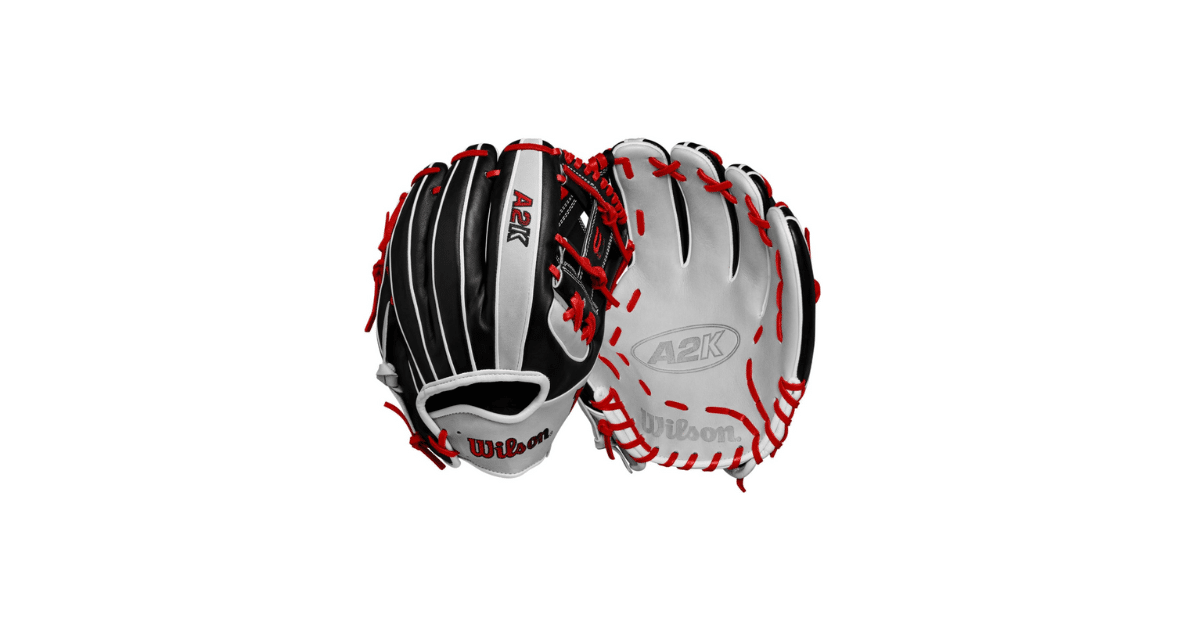

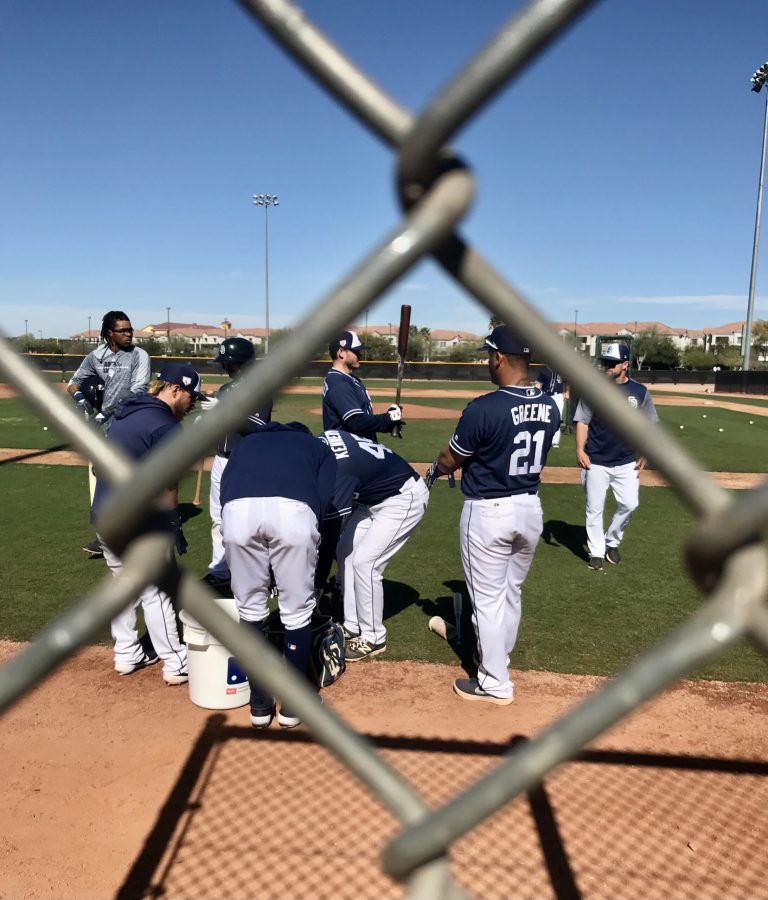
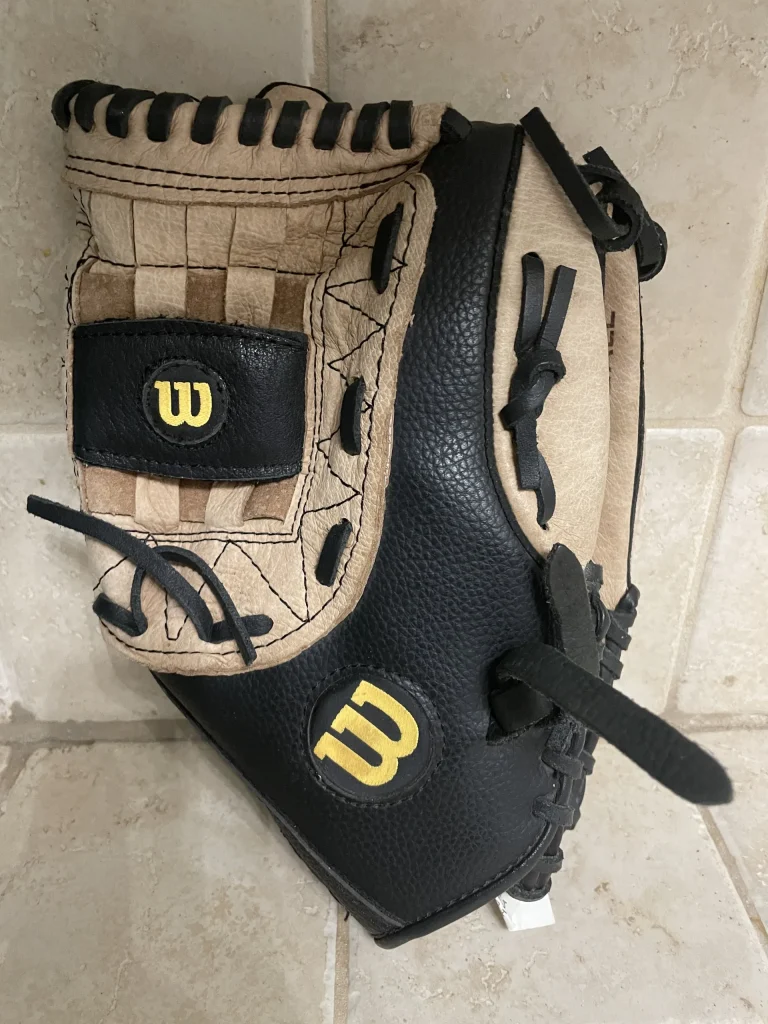
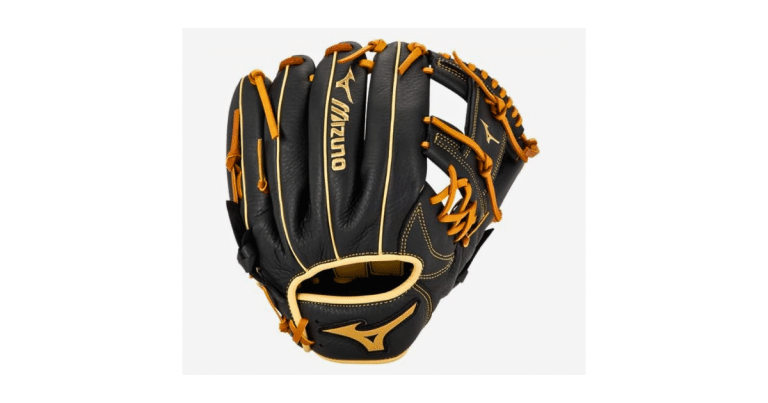

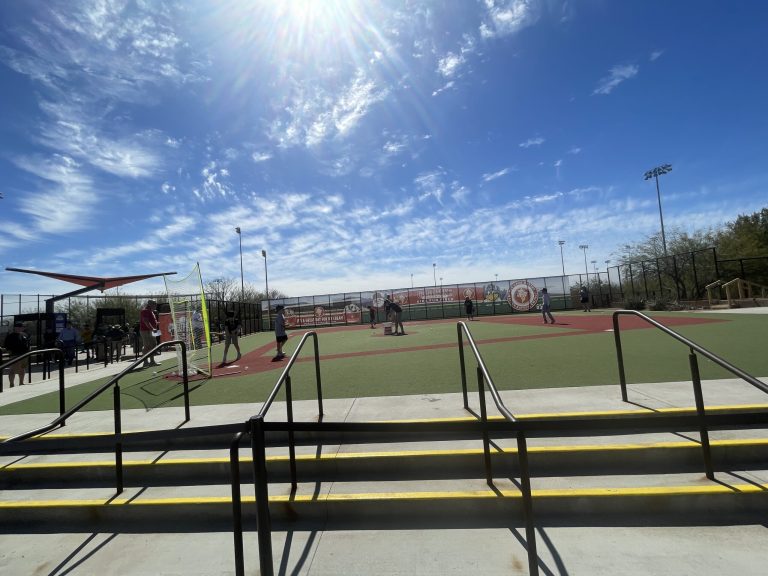
Very good https://t.ly/tndaA
Thanks.
Which was your favorite?